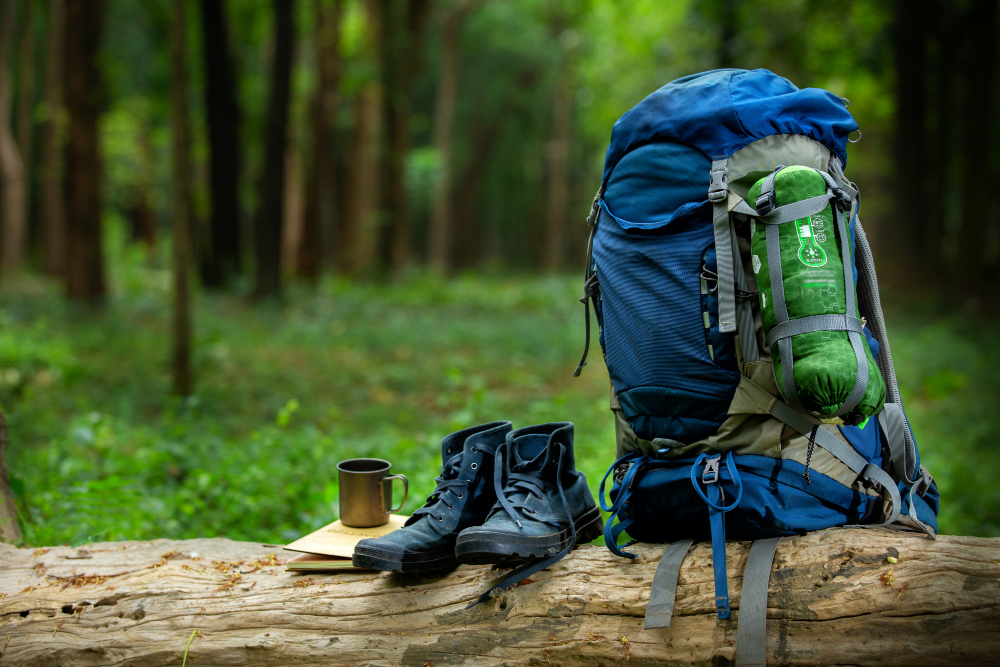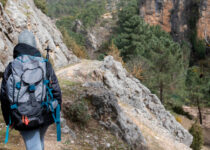Camping tent vs backpacking tent
Camping Tent Vs Backpacking Tent
When buying a tent, you need to consider the kind of travel you want to do. There are different ways and modes of traveling- backpacking across the country or camping in rugged terrain. When considering one for these purposes, consider what your weight is carrying capacity is and how much room the tent takes up on your person or in storage space when not being used.
A backpacking tent is lightweight and designed primarily for backcountry camping. It has more mesh on the sides and top, which helps with ventilation and stargazing.
Camping is not just about sleeping in nature but also about experiencing it through hiking, fishing, cooking over an open fire, or even playing games like hide-and-seek with your kids! On the other hand, camping tents for families or groups are more significant. These usually get transported by a vehicle and more accessories and features.
If you are trying to decide between backpacking tents vs camping tents, this article will help clarify the differences and make it easier.
Backpacking tent choices
When you are looking for a backpacking tent, you need to consider the following factors:
- Capacity or the number of people it can accommodate.
- Weight of the tent in folded form.
- Seasonality or weather conditions that the tent can withstand.
- Livability features such as comfort and convenience.
For backpacking tents, some accessories and materials are sold separately. These include items such as footprints that come individually for backpacking tents. These are required for the tent floor to provide extra padding and protection.
Usually, backpacking tents can accommodate one to four individuals. You need to have low weight for backpacking tents, and you need to go for snug fit tents, unlike camping tents. People who are more significant than average or wish to have more space can look for a plus-size tent.
Three-season tents are ideal for spring, fall, or summer for weather conditions. They are lightweight as they are not made of heavier fabrics or materials. These tents can withstand light rain or snow. However, these tents are not ideal for storms, heavy rains, or showers. You need to look for more delicate fabrics, fewer poles for a lightweight design.
To provide adequate protection from insects, the tents should have mesh panels. This also ensures sufficient airflow. If you opt for a backpacking tent that has more vertical walls, you will get more headroom inside the tent.
Tents for camping
The constraints that come with backpacking tents disappear when you look at camping tents. These are designed to accommodate bigger groups of friends or families. Many people set up a base camp and moved to higher grounds with a light backpacking tent. Those traveling to a campsite or traveling by car and wishing to pitch a tent by the road can look for this category of tents.

Factors to consider
Size
Usually, camping tents are chosen according to the size of the group that needs to be accommodated. You might want to park your bike or other gear as well as pets inside such tents. The standard rule is to opt for a compact size tent according to the number of people. If you wish to have more room, opt for a larger size to accommodate larger groups.
Read More:- Best 10 Person Tents For Camping
Seasonality
It would help if you chose a tent according to the seasons you would be camping in. Usually, tents for pleasant weather conditions such as spring, summer, or fall are made of lighter fabrics as less snow, rain, or high winds are expected during these seasons. It would help if you had thicker tents with greater weatherproofing that can withstand rain, light flooding, storms, and high winds for extreme weather conditions.
Features
Apart from the factors mentioned above, some handy tent design or framework features need to be considered to get an ideal camping tent. For instance, you need to decide on the height. Camping members should stand up straight inside the tent when changing clothes or walking around. There are cabin-style tents that have near-vertical walls and can accommodate tall people.
Dome-style tents are less tall than other types of camping tents. This makes it easy to shield against rain and stormy weather. Other features such as floor-length, doors, and tent poles need to be considered, too – the fewer bars there are on a camp tent, the less time it takes to set up one.
These points help you understand the basic features of Camping Tent Vs Backpacking Tent. And explain how to choose between the two categories according to your needs. Backpacking tents are lighter, compact, easier to set up than their larger counterparts. They also tend not to have as many poles or stakes. On the other hand, camping tents offer more space inside with plenty of room for sleeping bags.
Related Posts

Ohuhu 3 Person Tent with Carry Bag Review

Exploring the Benefits of Hiking as a Form of Exercise
